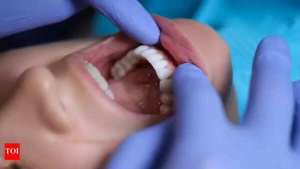The recent passing of Indian actress Shefali Jariwala has prompted widespread concern. While the official cause of death is pending post-mortem and forensic analysis, initial reports point to cardiac arrest. This tragic event underscores a growing trend of sudden heart issues affecting seemingly healthy, middle-aged women.

Sudden Cardiac Death (SCD) was once considered rare, especially among young adults. However, its increasing prevalence, particularly in India, demands urgent attention. Cardiovascular diseases account for approximately 28% of all deaths in India, with nearly 10% attributed to SCD. A significant portion of these fatalities occur in individuals between 30 and 50 years old.
India's evolving socioeconomic landscape has led to lifestyle changes, including:
These factors contribute to a rise in hypertension, obesity, diabetes, and coronary artery disease, all major risk factors for SCD. While historically more common in men, recent studies emphasize the unique and often overlooked risks women face. Unlike men, women who experience SCD often have no prior cardiac diagnoses. Structural abnormalities, such as myocardial scarring and ischemic heart disease, often remain undetected until post-mortem examinations. Many women do not exhibit classic warning signs like chest pain or ECG anomalies, making early detection incredibly challenging.
Women in their 40s and 50s, like Shefali Jariwala, face a silent but serious risk from underlying cardiac conditions. In younger populations, SCD is frequently associated with inherited or electrical disorders, including:
These conditions may remain asymptomatic until a fatal arrhythmia occurs. Factors such as left ventricular hypertrophy, obesity, and myocardial fibrosis also increase vulnerability in this age group. The progression of myocardial scarring and fibrosis can be attributed to cumulative exposure to cardiovascular risks, repeated micro-ischemic events, and hormonal changes, especially during perimenopause. Additionally, conditions like Myocardial Infarction with Non-Obstructive Coronary Arteries (MINOCA), more prevalent in younger women, often leave no trace in autopsies, making diagnosis even more difficult.
Stress played a significant role in Shefali's life, beginning with her early fame. Takutsobo cardiomyopathy (Broken Heart Syndrome) or Stress-induced Cardiomyopathy is a major cause of SCD in women. Her divorce, anxiety, depression, and epilepsy likely impacted her cardiovascular health. Psychiatric medications, especially those prolonging the QT interval, have also been linked to an increased risk of SCD.
Despite the severity of the issue, women are underrepresented in preventive heart care. Symptoms like fatigue, palpitations, or breathlessness are often dismissed or misattributed, delaying critical intervention. Cardiac arrest, resulting from electrical disturbances that cause the heart to stop suddenly, requires immediate CPR and defibrillation for survival, highlighting the need for early risk identification.
Medical experts urge for targeted public health strategies and enhanced early screening tools tailored to women, especially during perimenopause when cardiac risks increase.
The entertainment industry and fans mourn the loss of Shefali Jariwala. Her tragic passing serves as a reminder of the urgent need for systemic change in addressing women's heart health. Shefali captivated audiences, and her untimely death may serve as a symbol of awareness, a reminder that a silent heart can be fatal, and that women's cardiac health demands immediate attention, investment, and action.
Dr. Sarita Rao, MD, DM, FACC, FSCAI, Senior Interventional Cardiologist & Director Cathlab, Apollo Hospitals, Indore President, WINCARS Association, Co-chair, EAPCI International Affairs, SCAI International Board member, WIN-APSIC Board member
Newer articles
Older articles
 Bezos-Backed Methane-Tracking Satellite Mission Ends Abruptly After Loss of Contact
Bezos-Backed Methane-Tracking Satellite Mission Ends Abruptly After Loss of Contact
 Africa's Rift Valley: Mantle Upwelling Fuels Volcanic Activity, Foretelling New Ocean Birth
Africa's Rift Valley: Mantle Upwelling Fuels Volcanic Activity, Foretelling New Ocean Birth
 7 Proven Habits to Nail Your Next Job Interview: Project Confidence and Authenticity
7 Proven Habits to Nail Your Next Job Interview: Project Confidence and Authenticity
 Smith Targets Test Return After Innovative Baseball Cage Rehab in New York
Smith Targets Test Return After Innovative Baseball Cage Rehab in New York
 5 Subtle Signs of Prediabetes You Shouldn't Ignore
5 Subtle Signs of Prediabetes You Shouldn't Ignore
 Oral Cancer: Know the Warning Signs, Risk Factors, and Why Early Detection is Key to Survival
Oral Cancer: Know the Warning Signs, Risk Factors, and Why Early Detection is Key to Survival
 Hair Oil vs. Serum: Which Elixir is Right for Your Hair Type? A Comprehensive Guide
Hair Oil vs. Serum: Which Elixir is Right for Your Hair Type? A Comprehensive Guide
 Blackcaps and White Ferns Face Packed Home Summer Against Cricket Heavyweights
Blackcaps and White Ferns Face Packed Home Summer Against Cricket Heavyweights
 Gambhir Defends India's Tailenders After Headingley Collapse; Cites Dropped Catches as Key Factor in Test Loss
Gambhir Defends India's Tailenders After Headingley Collapse; Cites Dropped Catches as Key Factor in Test Loss
 England Captain Stokes Lauds Duckett and Crawley for Blistering Start in Record Chase Against India
England Captain Stokes Lauds Duckett and Crawley for Blistering Start in Record Chase Against India